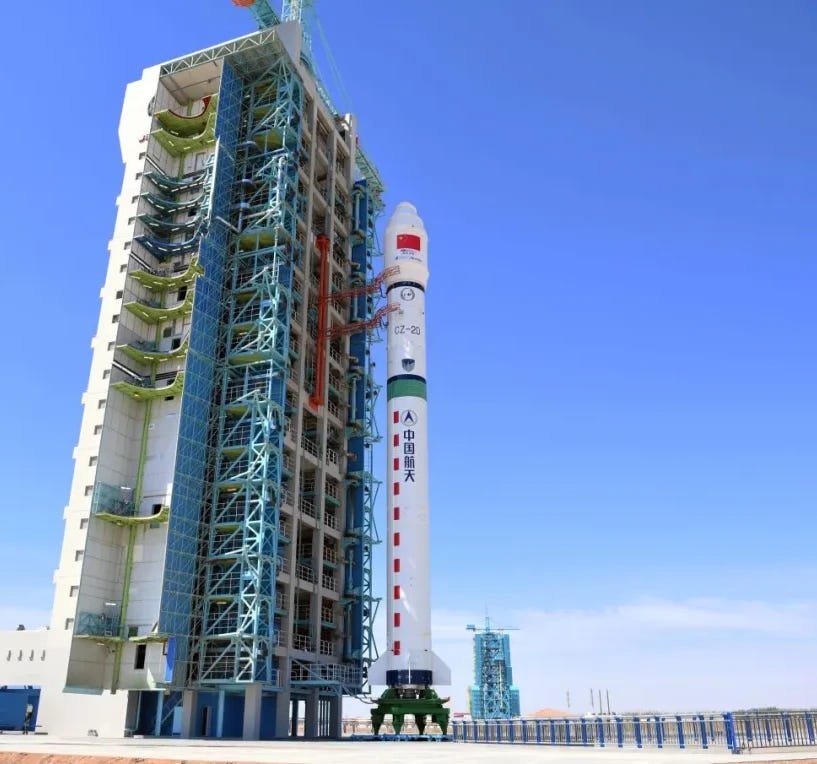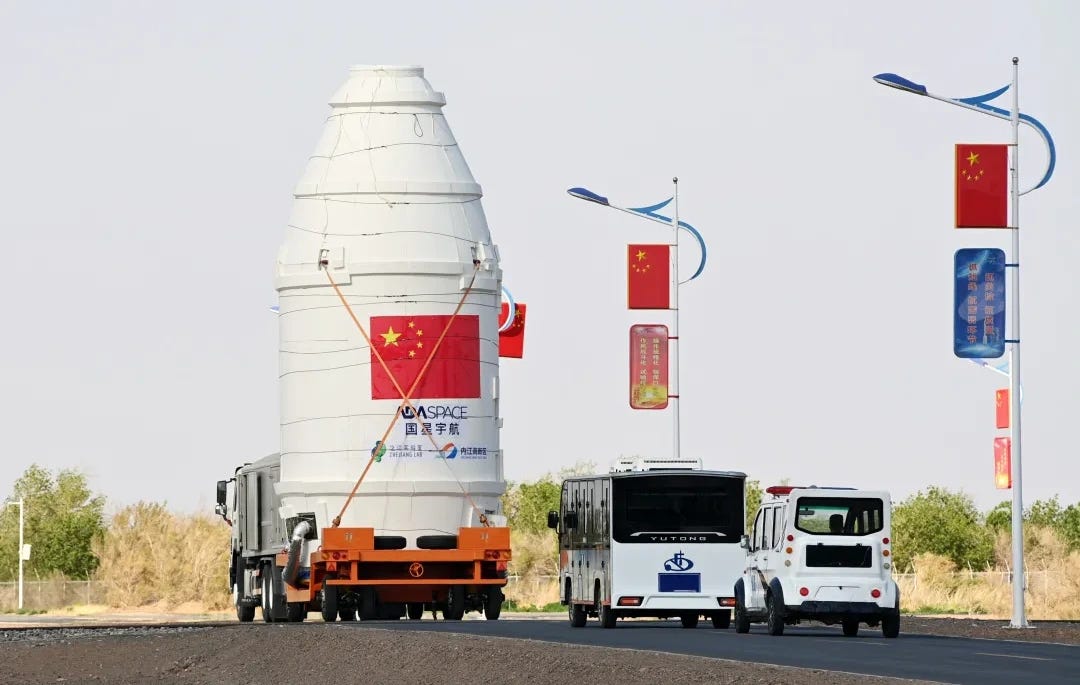New AI Processing Satellites [Long March 2D Y107]
A dozen satellites reached orbit after departing Jiuquan.

At Launch Area 4 from the Jiuquan Satellite Launch Center, a Long March 2D lifted off on May 14th at 12:12 pm China Standard Time (4:12 am Universal Coordinated Time) heading to sun-synchronous orbit. Atop of the rocket were a dozen satellites.
The twelve satellites onboard are the first group launch for a space computing satellite constellation for ADA Space, also known as Chengdu Guoxing Aerospace Technology Co Ltd (成都国星航天科技有限公司), and Alibaba Cloud (阿里云). This constellation could boast up to 192 satellites in orbit (possibly increasing to 2,800), with almost forty launched, for real-time data processing in orbit, utilizing artificial intelligence, from other spacecraft before sending the processed data down to Earth.
Intersatellite laser links, alongside conventional communications methods, are believed to be utilized with the spacecraft to allow for a high-throughput of data. According to China Daily, the satellites boast a combined 5 peta operations per second with 30 terabytes of storage capacity. The plan for the satellites, explained by Wang Jiang (王坚) of Alibaba Cloud, is as follows:
“Our goal is to scale up the computing power of a single satellite from the teraflop to the petaflop level, and to achieve seamless interconnectivity between satellites, just like how the internet links individual computers,” — “With a computing constellation, even a single satellite can generate value. This has profound implications for the future of the space industry.”

To launch the satellites, a payload adapter was used, allowing five spacecraft to be placed on the side of a cylinder, in two layers. With two other satellites stacked on top of the adapter. For deployment, the two spacecraft on top were separated first, followed by the two layers of five satellites.
According to the Shanghai Academy of Spaceflight Technology, this mission took just five months to go from the signing of a contract to launch, with the process organized by China Aerospace Science and Technology Corporation Commercial Rocket Co Ltd (中国航天科技集团商业火箭有限公司)1 for the first time. As such, work on necessary technical tasks is said to have begun early on in the launch campaign and was sped up thanks to existing experience and work from prior missions.

Additional work to mitigate weather-induced extra static electricity at the launch site was said to have been performed.
Today’s launch was the 98th mission for the Long March 2D, the 235th Long March vehicle from the Shanghai Academy of Spaceflight Technology, and the 576th launch of the Long March launch vehicle series. This was also the 27th launch from China in 2025.
Liftoff video via 航天五线谱 on Weibo and Cosmic Penguin on Twitter.
Check out the previous Long March 2D launch
New Mega-Constellation Test Group [Long March 2D Y78]
A Long March 2D blasted off from Launch Area 4 at the Jiuquan Satellite Launch Center on April 1st, at 12:00 pm China Standard Time (04:00 am Universal Coordinated Time). Today’s mission had the rocket deliver a group of satellites to low Earth orbit.
What is the Long March 2D?
This section is for those less familiar with China's Long March series of launch vehicles.
The Long March 2D is also one of the oldest launch vehicles from China, performing missions regularly to low Earth and sun-synchronous orbits by the Shanghai Academy of Spaceflight Technology, as a two-stage version of the Long March 4 vehicles. The two stages of the launch vehicle both burn Dinitrogen Tetroxide and Unsymmetrical Dimethylhydrazine.
The payload capacity of the launch vehicle is currently as follows:
3,500 kilograms to low Earth orbit
1,300 kilograms to a sun-synchronous orbit
The first-stage is powered by four YF-21C engines, which generate 302 tons of thrust burning Dinitrogen Tetroxide and Unsymmetrical Dimethylhydrazine. The second-stage is powered by a single YF-22C engine and four YF-23C verniers that generate 80 tons of thrust while also burning Dinitrogen Tetroxide and Unsymmetrical Dimethylhydrazine.
On the launch pad, the Long March 2D is 41.05 meters tall and weighs 232,250 kilograms when fully fuelled. The first and second stages have a diameter of 3.35 meters, with the fairing having a diameter of either 3.35, 3.8, or approximately 4 meters.
So far, the Long March 2D has flown from all three inland launch sites, the Jiuquan Satellite Launch Center, the Taiyuan Satellite Launch Center, and the Xichang Satellite Launch Center.
They are believed to be directly under the China Aerospace Science and Technology Corporation, which is also the parent company of the Shanghai Academy of Spaceflight Technology.



![New Mega-Constellation Test Group [Long March 2D Y78]](https://substackcdn.com/image/fetch/$s_!DHBx!,w_1300,h_650,c_fill,f_auto,q_auto:good,fl_progressive:steep,g_auto/https%3A%2F%2Fsubstack-post-media.s3.amazonaws.com%2Fpublic%2Fimages%2F8a0aeddf-c62f-4f75-895a-13e54836e39b_3931x2443.jpeg)


Thanks for the write-up. Intersatellite links and onboard processing capabilities will be critical enablers of the Chinese military’s space-based ISR architecture, which I’ll be covering in more detail over the next few weeks. https://ordersandobservations.substack.com